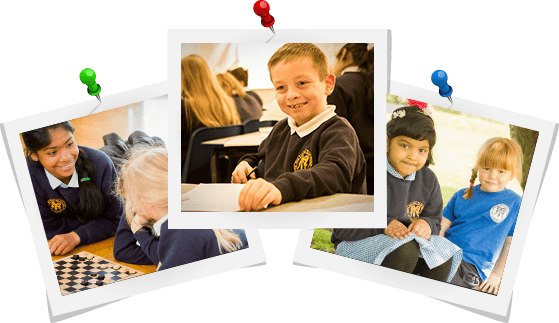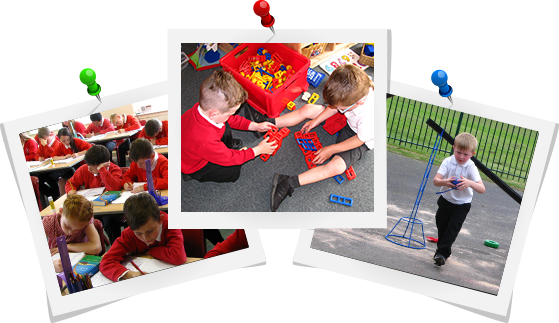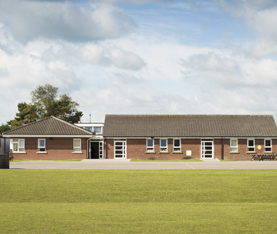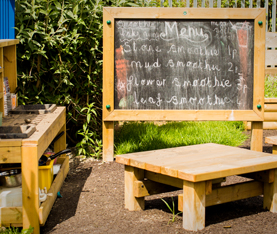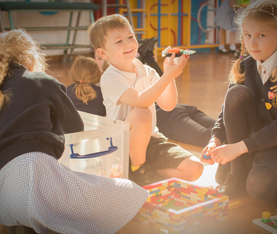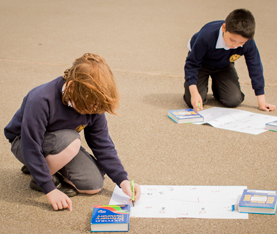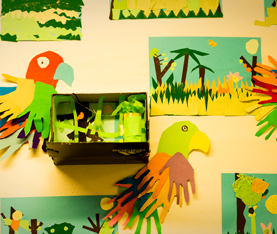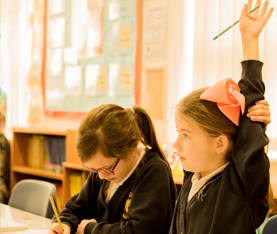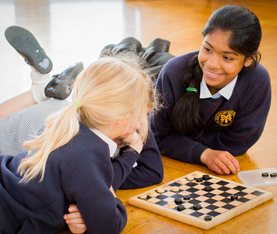Inclusion
(see also EAL; Disability Equality Scheme; Gifted and Talented; SEN)
Introduction
The mission statement of our school talks of valuing the individuality of all of our children. We are committed to giving all of our children every opportunity to achieve the highest of standards. We do this by taking account of pupils’ varied life experiences and needs. We offer a broad and balanced curriculum and have high expectations for all children. The achievements, attitudes and well-being of all our children matter. This policy helps to ensure that this school promotes the individuality of all our children, irrespective of ethnicity, attainment, age, disability, gender or background.
Aims and objectives
Our school aims to be an inclusive school. We actively seek to remove the barriers to learning and participation that can hinder or exclude individual pupils, or groups of pupils. This means that equality of opportunity must be a reality for our children. We make this a reality through the attention we pay to the different groups of children within our school:
- Girls and boys;
- Minority ethnic and faith groups;
- Children who need support to learn English as an Additional Language;
- Children with Special Educational Needs;
- Able, Gifted and Talented children;
- Children who are at risk of disaffection or exclusion; young carers, sick children, children from families under stress
- Travellers;
- Looked after children
The Foundation Stage and the National Curriculum are our starting point for planning a curriculum that meets the specific needs of individuals and groups of children. We meet these needs through:
- Designing a curriculum to promote a full range of learning, thinking and life skills
- Responding to children’s diverse learning needs;
- Setting suitable learning challenges;
- Overcoming potential barriers to learning and assessment for individuals and groups of pupils;
- Using flexible and responsive teaching and learning styles;
- Equipping students with the skills, knowledge and attitudes necessary to succeed as individuals and as responsible and valued members of society;
- Developing a close partnership with the whole community, particularly parents.
- Providing other curricular opportunities outside the National Curriculum to meet the needs of individuals or groups of children. (This includes speech and language therapy and mobility training.)
- Developing moral and spiritual values to develop the whole child
We achieve educational inclusion by continually reviewing what we do, through asking ourselves these key questions:
- Do all our children achieve their best?
- Are there differences in the achievement of different groups of children?
- What are we doing for those children who we know are not achieving their best?
- Are our actions effective?
- Are we successful in promoting racial harmony and preparing pupils to live in a diverse society?
Teaching and learning style
We aim to give all our children the opportunity to succeed and reach the highest level of personal achievement. We analyse the attainment of different groups of pupils to ensure that all pupils are achieving as much as they can. We also make ongoing assessments of each child’s progress. Teachers use this information when planning their lessons. It enables them to take into account the abilities of all their children. For some children, we use the programmes of study from earlier key stages. We also use a range of interventions at both Wave 2 and Wave 3 to ensure that those children who are falling behind are given opportunities to make progress.
When the attainment of a child falls significantly below the expected level, teachers enable the child to succeed by planning work that is in line with that child’s individual needs. Where the attainment of a child significantly exceeds the expected level of attainment, teachers use materials from a later key stage, or extend the breadth of work within the area or areas for which the child shows particular aptitude.
Teachers are familiar with the equal opportunities legislation covering race, gender and disability.
Teachers ensure that all children:
- Feel secure and know that their contributions are valued;
- Appreciate and value the differences they see in others;
- Take responsibility for their own actions;
- Are taught in groupings that allow them all to experience success;
- Use materials that reflect a range of social and cultural backgrounds, without stereotyping;
- Have a common curriculum experience that allows for a range of different learning styles;
- Have challenging targets that enable them to succeed;
- Are able to reflect on their own learning to ensure they know what they need to do to progress further
- Participate fully, regardless of disabilities or medical needs.
Children with disabilities
Some children in our school have disabilities. We are committed to meeting the needs of these children, through early identification as we are to meeting the needs of all groups of children within our school. The school fully meets the requirements of the amended Disability Discrimination Act that came into effect in 2006. All reasonable steps are taken to ensure that these children are not placed at a substantial disadvantage compared to non-disabled children.
The school is committed to providing an environment that allows disabled children full access to all areas of learning. All our classroom entrances are wide enough for wheelchair access, and the designated points of entry for our school also allow wheelchair access. Our Disability Equality Scheme Action Plan identifies how we intend to increase the extent to which disabled pupils, parents and members of the community can take advantage of all that our school has to offer.
Teachers modify teaching and learning expectations as appropriate for children with disabilities. For example, they may give additional time to complete certain activities, or they may modify teaching materials. In their planning teachers ensure that they give children with disabilities the opportunity to develop skills in practical aspects of the curriculum.
Teachers ensure that the work undertaken by disabled children:
- Takes account of their pace of learning and the equipment they use;
- Takes account of the effort and concentration needed in oral work, or when using, for example, vision aids;
- Is adapted or offers alternative activities in those subjects where children are unable to manipulate tools or equipment, or use certain types of materials;
- Allows opportunities for them to take part in educational visits and other activities linked to their studies;
- Includes approaches that allow hearing-impaired children to learn about sound in science and music, and visually-impaired children both to learn about light in science, and also to use visual resources and images both in art and design and in design and technology;
- Uses assessment techniques that reflect their individual needs and abilities.
Disapplication and modification
The school can, where necessary, modify the National Curriculum and its assessment arrangements. Our school policy is to do this only in exceptional circumstances. The school makes every effort to meet the learning needs of all its children, without recourse to disapplication or modification. We achieve this through greater differentiation of the child’s work, or through the provision of additional learning resources. When necessary, we also support learning through appropriate external specialists. In such cases, teachers work closely with these specialists to support the child.
In exceptional circumstances we may decide that modification or disapplication is the correct procedure to follow. We would only do this after detailed consultation with parents and the Local Education Authority. The school’s governor with responsibility for special educational needs would also be closely involved in this process. We would ensure that every effort had been made to provide the necessary support from within the school’s resources before considering such action.
Inclusion and Vulnerable Groups
As a school we ensure that all children from vulnerable groups are given opportunities to access all areas of the curriculum and the wider school environment.
Ongoing Assessment for Learning allows all children to be tracked regularly to ensure they are not falling behind. Regular monitoring between the SENCO, Class Teachers and Teaching Assistants ensure all children are placed on catch up programmes or suitable intervention programmes if progress is not being made or concerns are identified. These programmes could be social, emotional or behavioural as well as curriculum based. The Additional Needs Register clearly identifies those children that are deemed as ‘Vulnerable’
We aim to provide a happy, healthy and safe school by:
Recognising, reflecting and celebrating the skills, talents, contributions and diversity of all our pupils
Providing high quality pastoral care, support and guidance
Safeguarding the health, safety and welfare of pupils
Listening and responding to the concerns of children and parents
Taking care to balance the needs of all members of the school community
Summary
In our school we value each child as a unique individual. We will strive to meet the needs of all our children, and seek to ensure that we meet all statutory requirements related to matters of inclusion.
Monitoring and review
This policy is monitored by the governing body, and will be reviewed in two years, or earlier if necessary.
Stella Clarke SEN Coordinator
Anne Parr and Angela Spencer Co Head Teacher
Date: October 2019
